It is always a motivating and attention-grabbing experience to attend the annual United Nations’ climate change conference. For the fourth year in a row, I have had the privilege of representing the International CCS Knowledge Centre at the Conference of the Parties (COP). COP25 was held this past December in Madrid, Spain. This year’s COP saw many news-worthy stories from the youth climate movement protests, to the lack of guidance on Article 6 of the Paris Agreement.
But for carbon capture and storage (CCS/CCUS), COP25 seemed to prominently and positively feature this clean technology solution more than the past four years have done. Because of this, for CCS, COP25 was a major success for championing a viable and necessary climate action tool to a global audience. And it’s not hard to see why there is more momentum. (I discuss just how important CCS is for large-scale emission reductions in a previous blog on the International Panel on Climate Change’s (IPCC) report for limiting global warming to 1.5°C.)
The Knowledge Centre’s presence at COP25 on panels and presentations was greater this year than previous years. We were happy to speak specifically about:
-
CCS being demonstrated and operable for five years at Boundary Dam 3 CCS Facility (BD3);
-
our cost reduction results based on lessons learned (and thus the need to collaborate on deploying more facilities); and
-
the need for CCS on coal in many developing countries like China, but more so the ability to share lessons beyond coal to other industrial sources such as cement. Specifically I spoke about the recently announced joint project with the Knowledge Centre and Lehigh Hanson to examine full-scale CCS at the Lehigh Hanson cement plant in Edmonton, Alberta as a definitive solution to cut GHG emissions – a North American first in the cement industry.
CCS as an Official Side Event at COP25
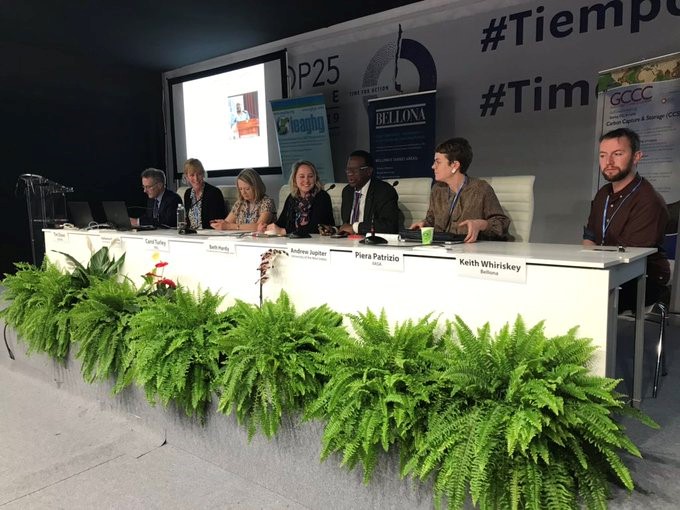
‘Carbon Removal and Return: Can CCS Decarbonize Industry in South America and Help the Oceans?’
At the official CCS side event on the role of CCS in decarbonizing Industry – ‘Carbon Removal and Return: Can CCS Decarbonize Industry in South America and Help the Oceans?’ a broader audience gathered to hear about CCS. Given the increasing need to focus on reducing industrial emissions, I spoke about both how the Shand CCS Feasibility Study is currently informing second generation CCS and of the potential for CCS to decarbonize the cement industry, which represents eight per cent of global carbon emissions. This drew a lot of interest from delegates, leading to follow up conversations on the application of CCS on cement and other heavy-emitting industries, and the flexibility for integrating renewables.
For detailed coverage of the panel, click here, however, some key take-aways from the other panellists include:
-
IEAGHG General Manager and Knowledge Centre Board Member, Tim Dixon, conveyed what CCS is and its history in the UN Framework Convention on Climate Change (UNFCCC) negotiations.
-
Dixon referenced the IPCC Special Report, and recent movement to include CO2 transport and storage under the London Protocol for marine environment protection. This was underscored by Dr. Carol Turney’s presentation on how oceans are impacted by climate change as a major sink.
-
The rise of oceans affects small island states. Prof. Andrew Jupiter passionately explained why Trinidad & Tobago is interested in CCS for acting in a vulnerable region.
-
Dr. Katherine Romanuk of the Gulf Coast Carbon Centre provided an expert overview on why storage of CO2 is safe, has been done and proven, and is an effective way to help get to climate goals.
-
Bellona’s Keith Whiriskey echoed the need for CCS in industry and also explained how hubs and clusters can effectively reduce the financial implications for industry with shared infrastructure.
-
Bioenergy CCS, direct air capture, and jobs were also covered in this very informative panel.
CCS at other Venues During COP25
I also had the opportunity to present at other pavilions, including ‘From Japan to the world – Saving our Beautiful Planet with CCS,’ where I again offered the value of lessons learned and the steady improvement in the performance of BD3; as well as on how CCS hubs and clusters (such as the Alberta Carbon Trunk Line) are an important way to drive accelerated deployment.
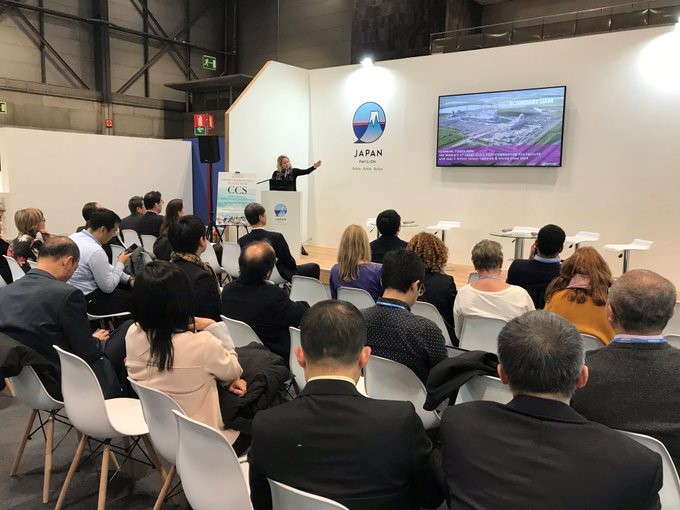
At the China Pavilion, a two-hour CCUS event took place which is a testament to the value of CCUS for China, and the amount of work taking place to help reduce emissions there from various sectors. Collectively, we were able to explain how cooperative approaches drive future opportunities while also covering our own CCS learnings around financing, investment, cost and risk reductions, as well as environmental and safety considerations.
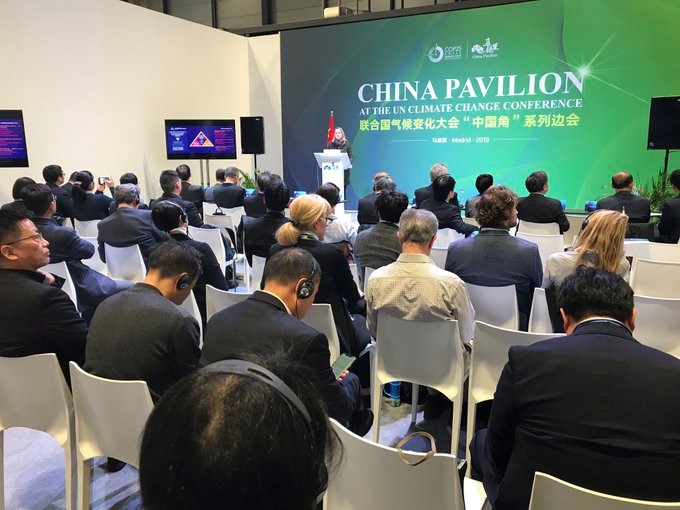
The UK Pavilion CCUS event, in collaboration with the International Energy Agency, reminded delegates that CCS is already deployed in many industries. I spoke on the value of industry clusters alongside other international colleagues who were actively showing how multiple industrial point sources of CO2 can be connected to a CO2 transport and storage network where there is access to large geological storage sites that have the capacity to safely store CO2 indefinitely. Additionally, this event highlighted that economies of scale can deliver: lower unit-costs for CO2 storage; synergies between multiple CO2 sources; and, reduce cross chain risks and support commercial viability for the storage operator.
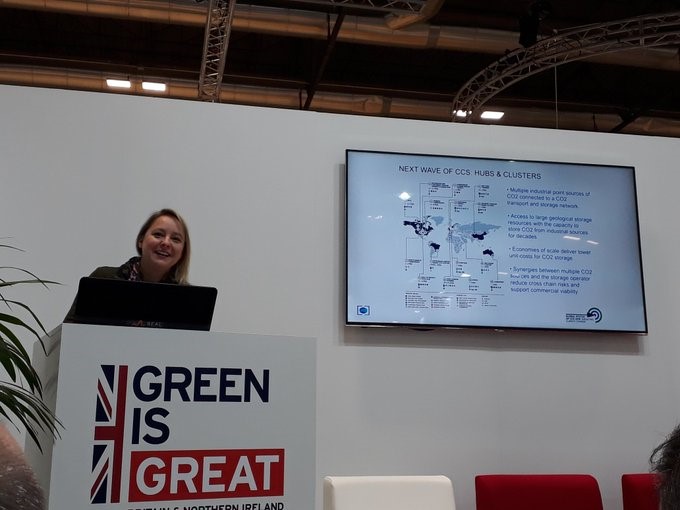
I was also happy to help organize and participate in a high-level, closed-door roundtable CCS discussion that focussed on key policies and measures needed to drive transformation and growth of a low carbon economy.
Highlights of the Global Status of CCS 2019 Report Targeting Climate Change
Another major highlight of COP 25 was the Global CCS Institute’s release of the Global Status of CCS 2019 Report Targeting Climate Change. With much interesting and valuable content, we also thank the Institute for their mentions both of BD3 and the Shand CCS Feasibility Study in demonstrating how capture costs using mature amine-based capture systems have come down with the experience and knowledge that is provided for subsequent CCS plants. The figure from the report, shown below, illustrates the Levelized Cost of Capture (LCOC) for BD3, Petra Nova and Shand. It’s important to note that having experts involved in the early pre-feasibility stage of a contemplated CCS project to efficiently map out its discourse is also a sure way to ensure costs are kept to a minimum.
One other key takeaway I will highlight from the report is how it supports the notion that broader deployment of CCS facilities will lead to further reductions in risks, costs, and greater CCS investments, which in turn, leads to a mature global CCS industry. The Knowledge Centre agrees completely with this premise and aims to advance the understanding and use of CCS and accelerate its deployment worldwide for this very purpose.

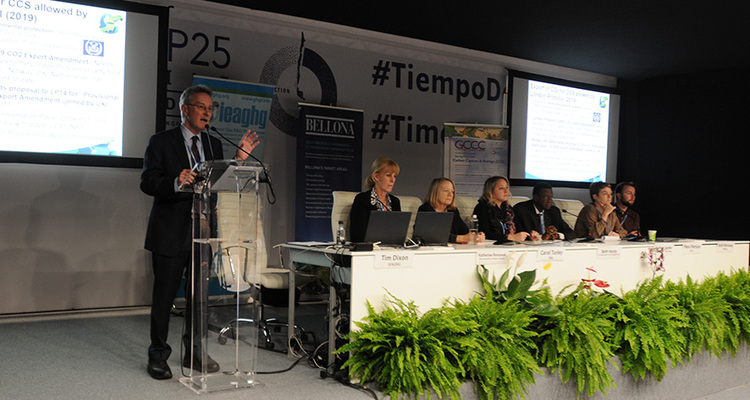
-cropped-cropped.jpg)